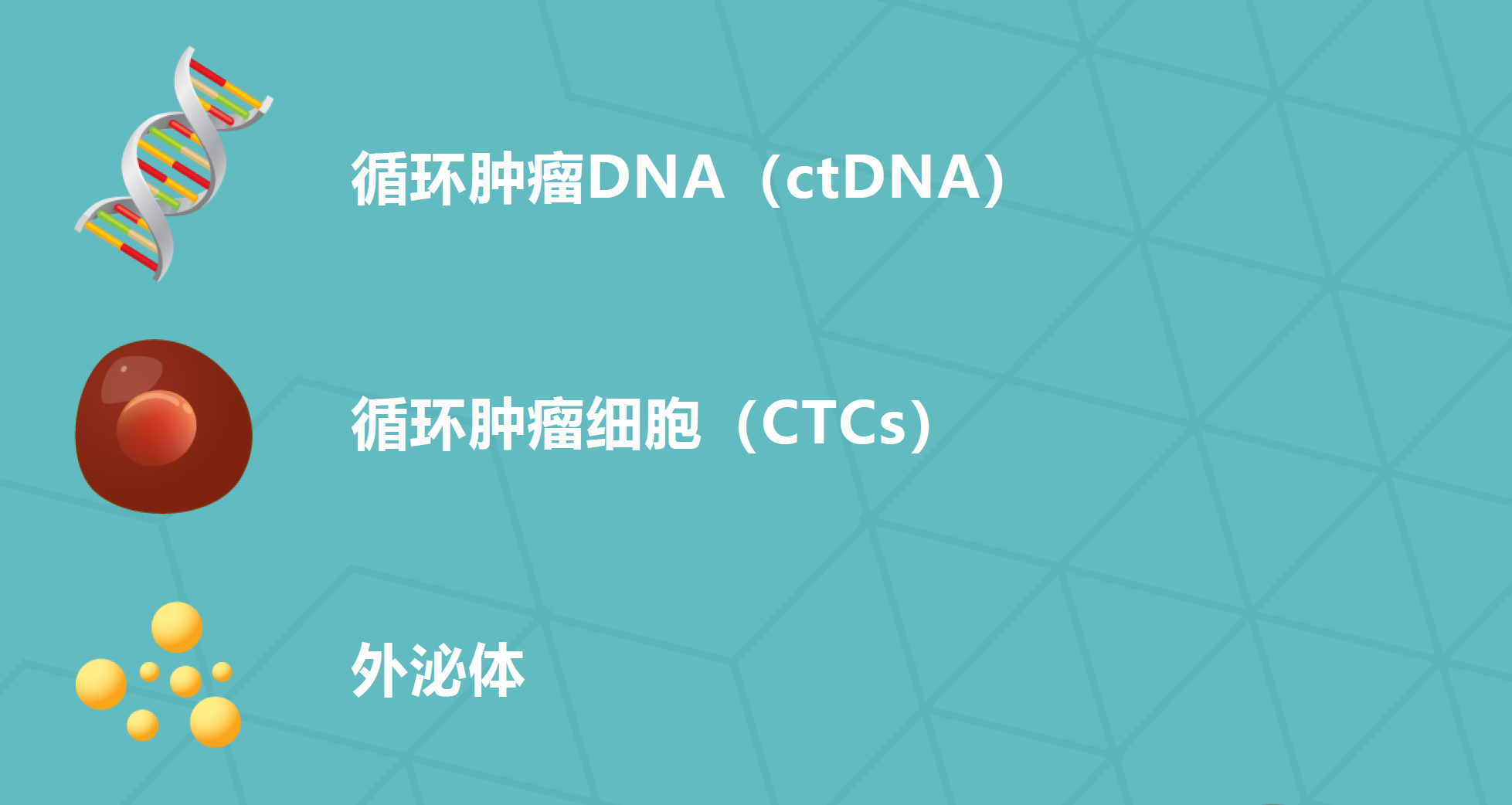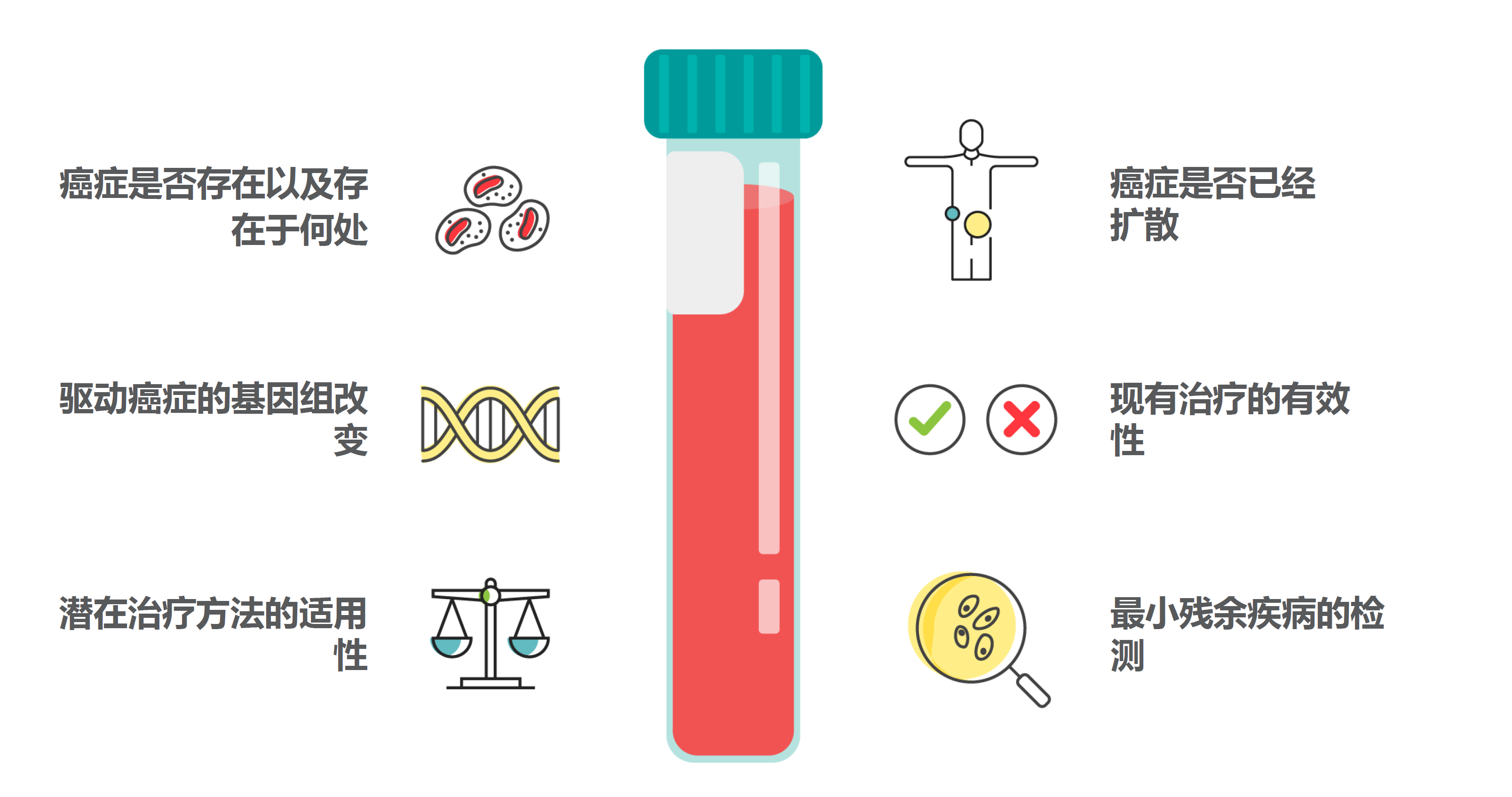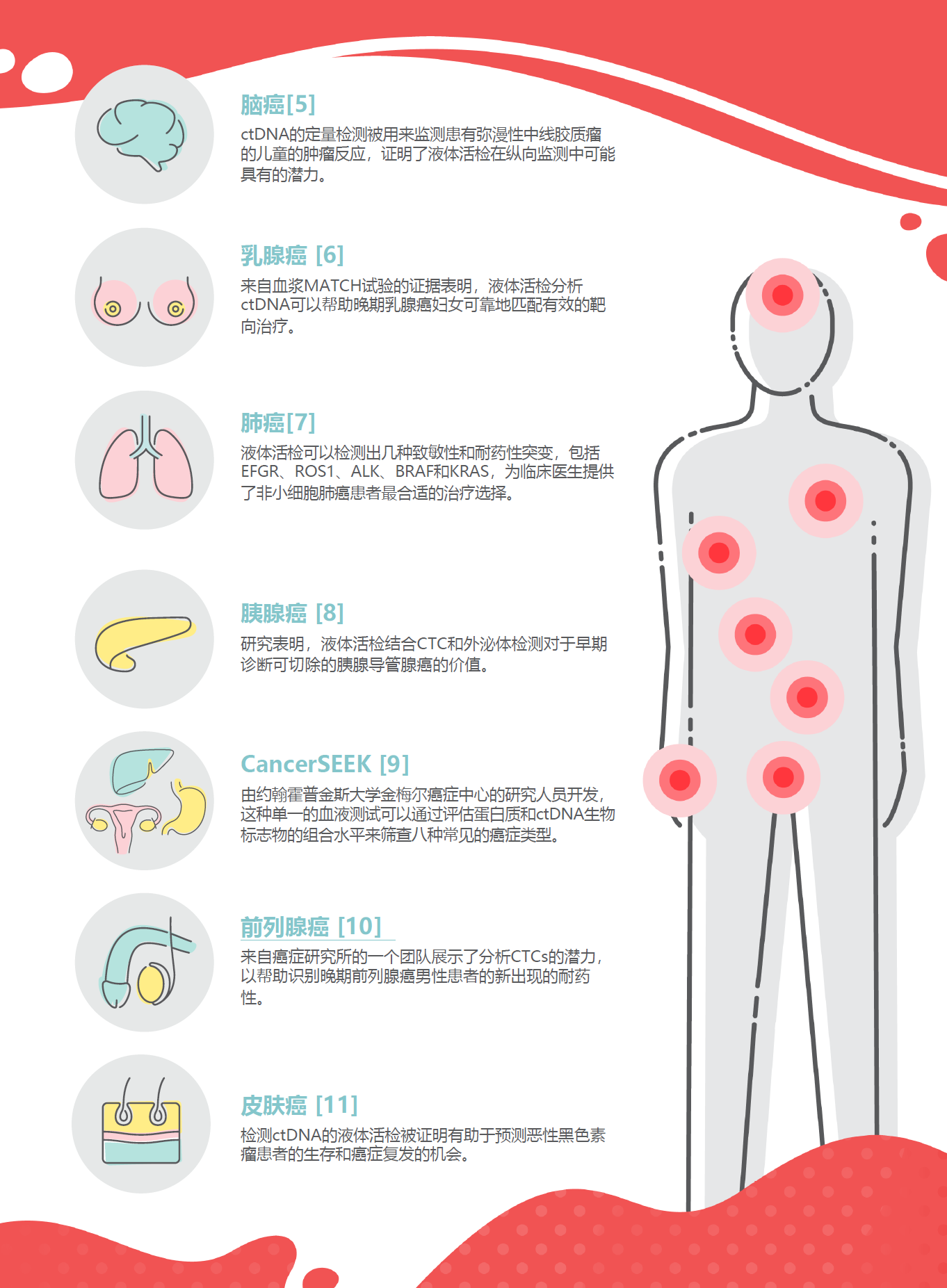登陆有奖并可浏览互动!
您需要 登录 才可以下载或查看,没有账号?立即注册


×
在本文中,我们概述了液体活检的基本原理,并探讨了其在癌症诊断和监测中的应用。
1、什么是液体活检?
液体活检包括对血液、尿液或唾液等体液进行采样和分析,以寻找癌症或其他疾病的迹象。液体活检可以检测出一系列由肿瘤脱落的生物标志物[1]类型,包括:

用于分离和分析的技术[2]取决于液体活检所针对的生物标志物的类型。
2、液体活检能告诉我们什么?
液体活检可用于为临床医生提供各种信息[3],包括:

3、液体活检与传统外科活检相比有何不同?
外科肿瘤组织活检被认为是目前癌症诊断和治疗的“金标准”,与其相比,液体活检有几个优势[4]:
- 侵入性小;
- 风险较低;
- 克服了难以获得的组织采样的挑战;
- 反映肿瘤的异质性;
- 实时检测;
- 更快得到结果的时间;
- 便于重复采样和纵向分析。
人们对使用液体活检来革新癌症护理的兴趣越来越大,希望液体活检可以发展成为一系列癌症的可靠和实用的筛查和监测工具。

4、液态活检面临的挑战
然而,在液体活检[12]的全部临床效用达到之前,仍有一些障碍[13]需要克服,包括:
4.1、特异性
检测高特异性的生物标志物是防止误诊的必要条件。液体活检必须准确区分癌症生物标志物和健康或其他疾病标志物。
4.2、灵敏度
液体活检寻找的许多生物标志物的浓度低得惊人,尤其是在癌症的前期症状阶段。需要有技术来提高对这些“干草堆中的针”的检测。
4.3、分析前样品处理
需要努力使分析前的工具和程序标准化并加以改进,以减少出错的机会和相关的次优治疗决定。
5、液体活检的未来
液体活检有可能成为动态监测癌症患者的首选,并更广泛地用于预测免疫治疗反应和调整治疗方法。它们不太可能完全取代手术活检,而是作为一种补充工具使用。
对于液态活检而言,长期目标是将它们广泛用于早期诊断和筛查,更早地发现癌症,此时干预措施的成功率更高。
诊断科学编辑团队收集、整理和编撰,如需更多资讯,请关注公众号诊断科学(DiagnosticsScience)。
参考文献
- Zhang W, Xia W, Lv Z, Xin Y, Ni C, Yang L. Liquid biopsy for cancer: circulating tumor cells, circulating free dna or exosomes? CPB. 2017;41(2):755-768. doi:10.1159/000458736
- Mathai R, Vidya R, Reddy B, et al. Potential utility of liquid biopsy as a diagnostic and prognostic tool for the assessment of solid tumors: implications in the precision oncology. JCM. 2019;8(3):373. doi:10.3390/jcm8030373
- Crowley E, Di Nicolantonio F, Loupakis F, Bardelli A. Liquid biopsy: monitoring cancer-genetics in the blood. Nat Rev Clin Oncol. 2013;10(8):472-484. doi:10.1038/nrclinonc.2013.110
- Qi Z, Xu H, Zhang S et al. The Significance of Liquid Biopsy in Pancreatic Cancer. J Cancer. 2018;9(18):3417-3426. doi:10.7150/jca.24591
- Panditharatna E, Kilburn LB, Aboian MS, et al. Clinically relevant and minimally invasive tumor surveillance of pediatric diffuse midline gliomas using patient-derived liquid biopsy. Clin Cancer Res. 2018;24(23):5850-5859. doi:10.1158/1078-0432.CCR-18-1345
- Turner NC, Kingston B, Kilburn LS, et al. Circulating tumour DNA analysis to direct therapy in advanced breast cancer (plasma MATCH): a multicentre, multicohort, phase 2a, platform trial. The Lancet Oncology. 2020;21(10):1296-1308. doi:10.1016/s1470-2045(20)30444-7
- Saarenheimo J, Eigeliene N, Andersen H, Tiirola M, Jekunen A. The value of liquid biopsies for guiding therapy decisions in non-small cell lung cancer. Front Oncol. 2019;9:129. doi:10.3389/fonc.2019.00129
- Buscail E, Alix-Panabières C, Quincy P, et al. High clinical value of liquid biopsy to detect circulating tumor cells and tumor exosomes in pancreatic ductal adenocarcinoma patients eligible for up-front surgery. Cancers. 2019;11(11):1656. doi:10.3390/cancers11111656
- Cohen JD, Li L, Wang Y, et al. Detection and localization of surgically resectable cancers with a multi-analyte blood test. Science. 2018;359(6378):926-930. doi:10.1126/science.aar3247
- Lambros MB, Seed G, Sumanasuriya S, et al. Single-Cell Analyses of Prostate Cancer Liquid Biopsies Acquired by Apheresis. Clinical Cancer Research. 2018;24(22). doi:10.1158/1078-0432.CCR-18-0862
- Lee RJ, Gremel G, Marshall A, et al. Circulating tumor DNA predicts survival in patients with resected high-risk stage II/III melanoma. Annals ofOncology. 2018;29(2):490-496. doi:10.1093/annonc/mdx717
- Rossi G, Ignatiadis M. Promises and pitfalls of using liquid biopsy for precision medicine. Cancer Res. 2019;79(11):2798-2804. doi:10.1158/0008-5472.CAN-18-3402
- Neumann MHD, Bender S, Krahn T, Schlange T. ctDNA and CTCs in Liquid Biopsy – Current Status and Where We Need to Progress. Computational and Structural Biotechnology Journal. 2018;16:190-195. doi:10.1016/j.csbj.2018.05.002
***
原文地址:https://zhuanlan.zhihu.com/p/497339985 |
 /3
/3 